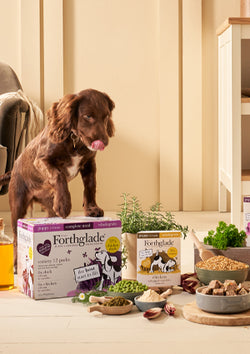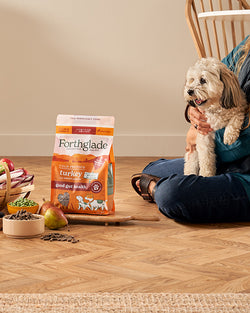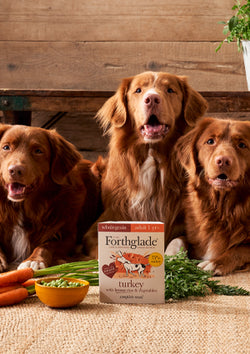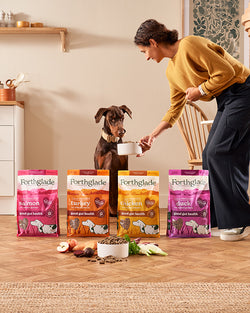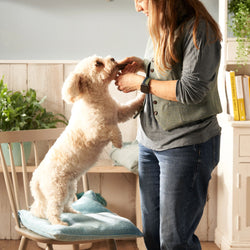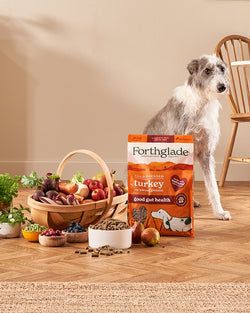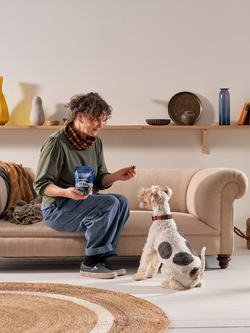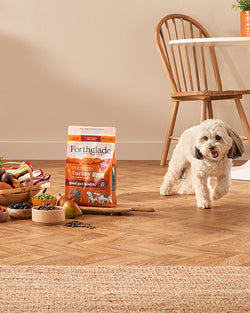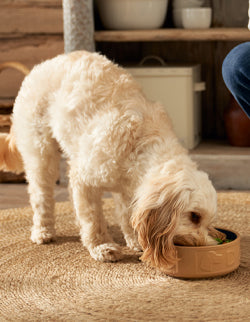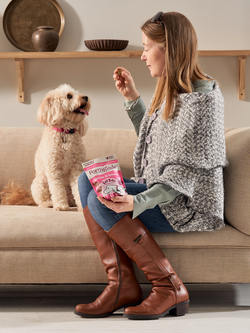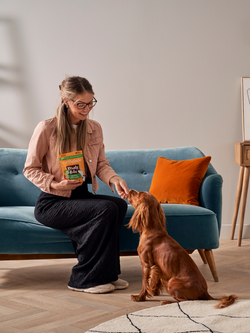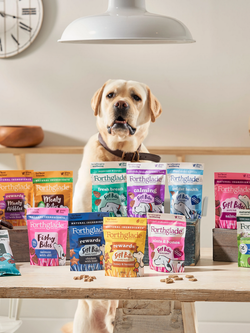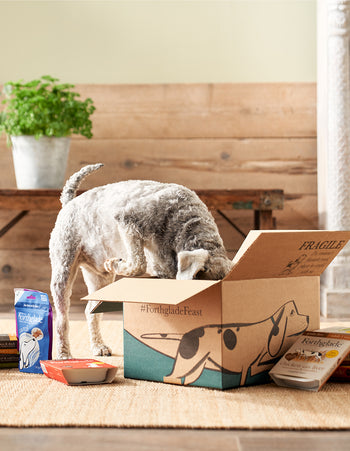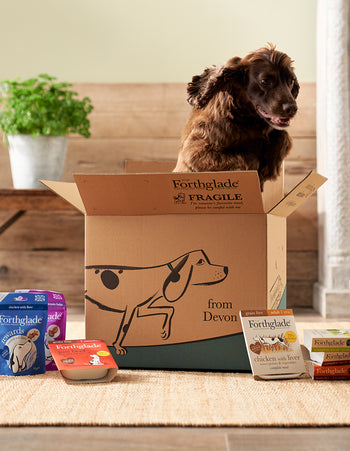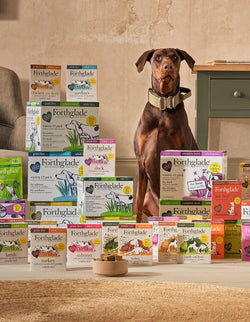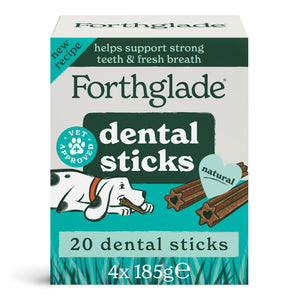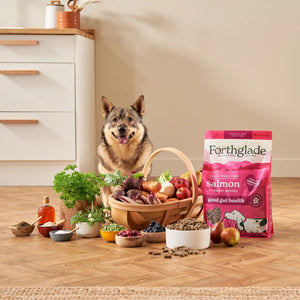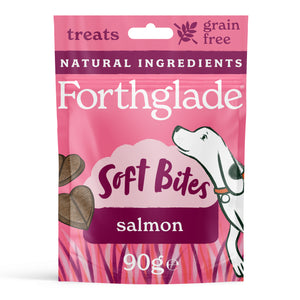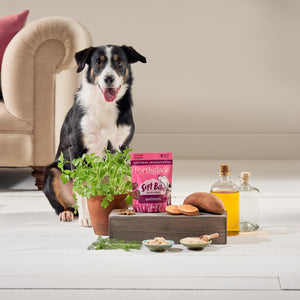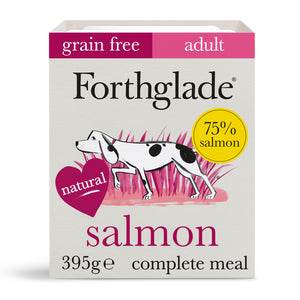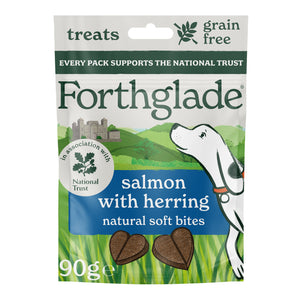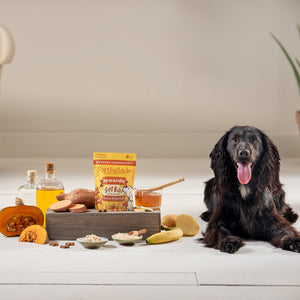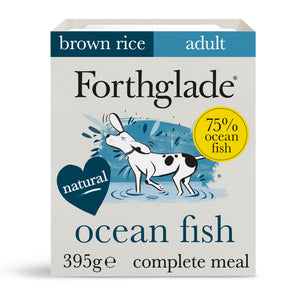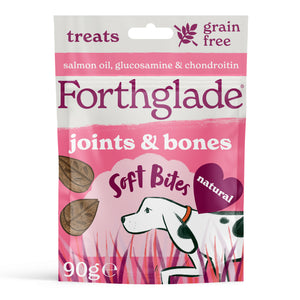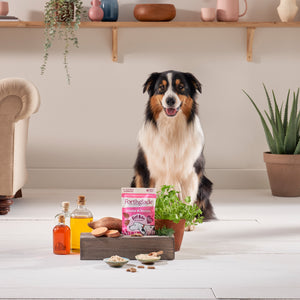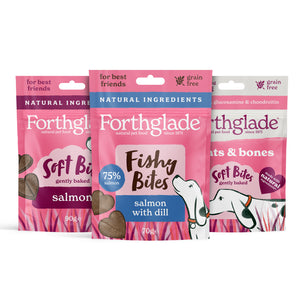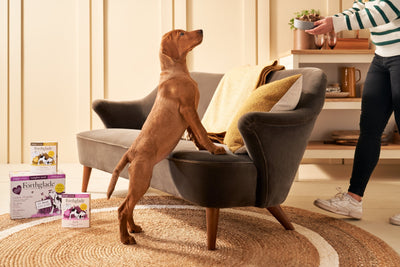Travelling with your four-legged friend can sometimes feel a little overwhelming – especially when planning adventures across Europe. That’s why we’ve teamed up with LeShuttle – the quickest, easiest, and most sustainable way to cross the Channel together. You and up to 5 dogs and 9 passengers can travel comfortably in your own car, with no baggage limits on a single ticket. So, you can both sit back, relax, and enjoy the journey from the very start.
Find out more about our partnership here!
Preparing Your Dog for Car Travel
Written by: Caroline Wilkinson - ICAN Certified Animal Behaviourist
Reducing Stress for a Smoother Journey
Do you dream of sharing overseas adventures alongside your dog - but the length of car travel puts you off? Whether it’s the anxiety of motion sickness, negative past experiences, separation challenges, or a change in routine, many dogs find car journeys stressful. And therefore, understandably, so do their humans.
To help reduce that stress - and open up a new level of travel opportunities - I’m here to share some simple ways to help your dog get prepared for your road-trip adventures, wherever they may take you. With the right preparation and support for your dog’s emotional and physical wellbeing, you can help your dog become a confident, relaxed travel companion. And when your destination involves crossing the Channel, choosing a travel option that lets you both stay together - like LeShuttle - can make a world of difference.

Why do dogs find car travel stressful?
For dogs, the car isn’t just a vehicle. It can be noisy and unpredictable (all that stopping and starting) plus, depending on where they’re travelling within the car, it's sometimes uncomfortable. That’s a lot to process, especially if you don’t know what’s coming at the end of the journey.
The car can also be linked to difficult memories - being taken from their first home and mother as a puppy, visits to the vets, feeling nauseous, or perhaps even a fall off the seat or a traffic collision.
Any dog who is struggling with travel should also have a check up with their vet, as gut issues or pain may also be contributing to your dog’s fear of the car. They might be anticipating feeling nauseous or physically uncomfortable, as they have done in the past, which over time can lead to a fear of entering the car.
How do I know if my dog is stressed in the car?
Some dogs get visibly distressed: panting, pacing, whining, or barking. They might also have sickness or drool excessively. Other dogs may freeze on approach to the car - refusing to get in and showing visibly anxious body language.
If your dog travels in the boot of your car, it’s worth getting a rear-view mirror to be able to watch them to ensure they’re feeling comfortable. A dog who moves around or makes noise is very easy to spot in terms of their anxiety, but one who sits rigidly or tucks up their body with fear is easy to miss if you can’t see them - and we’d hate to leave them suffering in silence.
What can I do to help my anxious dog during journeys?
It's important to be proactive in addressing your dog’s anxieties - especially around car travel. Simply hoping they’ll “grow out of it” or eventually get used to it can backfire, leading to increased fear over time.
When working to create a more positive association with the car, it can help to limit travel temporarily. Stick to local walks that don’t require driving, if possible. If travel is unavoidable, consider using separate parts of the car for different purposes: for example, use a crash-tested harness in the back seat for essential trips, and reserve a different area - like a safety-approved crate in the boot - for your positive car-travel training sessions. This separation of travel spaces helps prevent confusion and supports the formation of new, positive associations with the car.
Build Positive Associations with the Car
Before you even start the engine, we want to help your dog associate the car with positive experiences, to try and reduce their stress when entering the car or when you start moving.
Let your dog explore the car while it’s stationary. Place treats around the car or give them something like a lickimat covered with Forthglade’s wet food. Keep all doors open, with your dog on a longline attached to a harness. Help them in and out of the car as they move around - but let them be in charge of how they explore the car.
Sit with them while they’re eating food there - don’t rush them. If they won’t even enter the car, then you can instead place treats around the wheels and just inside the door rim for them to access it without needing to go inside.

Make the Space Comfortable for Your Dog
Where your dog actually sits can make a big difference to their enjoyment of the car. Try taking short journeys with them in a crate in the boot or attached with a crash-safety harness in the front and the back seats. See whether any of these spaces make them feel more at ease.
If they’re travelling on a seat, ensure the footwell in front of them is filled with something to ease any worry they may feel about falling into that space if the car stops suddenly. Use cushions or a duvet to fill up the area in advance of all journeys.
Changing the scent of the car through floral waters such as Linden Blossom (which supports feelings of trust) or Rose (which helps lower arousal) can be of help too. Although always make sure your dog has access to fresh air too. Calming music - such as soft rock or classical - can also support your dog to feel more relaxed.
Build things up slowly
Don’t rush straight back to journeys once your dog feels more relaxed - instead, first spend time outside your home with the engine running but not actually driving anywhere. Then take very short journeys of just a minute or two - stopping and returning home if your dog appears stressed.
In the early days, if you are walking with someone else - you could ask them to drive the car to your walking location, while you walk your dog there. Then you all return home in the car, meaning your dog needs to spend less time in there and focus on the post-exercise time when they predict going home.
Plan Regular Breaks
Once you’ve built up journey time - and are ready for your holiday adventures - plan lots of regular breaks during longer trips. Breaks not only allow your dog to toilet and feel comfortable, but they also allow you to give them some physical and mental stimulation.
Encourage your dog to use their nose, by scattering treats into long grass or taking a short sniffy walk. Sniffing can do wonders for reducing stress levels.
Get Support
Remember progress isn’t linear and if your dog shows signs of extreme distress, it’s okay to take a step back. Consult a qualified behaviourist (ideally one who uses positive, force-free methods) to guide you through your journey. Be patient, celebrate small wins, and never force your dog into a situation they’re not ready for.

The Comfort of Staying Together
A common but overlooked source of travel stress for dogs is anxiety around separation - whether from early memories of being away from their mother and litter or simply being far from their human in the car. This can be especially stressful on longer trips or when the dog is placed in the back alone or left in the car during travel abroad.
If your dog gets anxious, try to sit near them while driving, especially when traveling solo. For international trips, choose options that let you stay together. For example, by choosing LeShuttle, which allows dogs to remain with their owners, unlike some ferries or trains that separate them. Clients often see dramatic improvements in their dog’s behaviour just by staying close during travel. It eases your stress too, knowing your dog isn't alone in a crate or hold.
Your Travel Day Checklist
Get ready for the day of your holiday travel by:
- Feeding your dog a smaller meal than normal - ideally a few hours before travelling to avoid motion sickness.
- Giving them a short, relaxed sniffy walk to help relax them before they get in the car.
- Trying to reduce your own stress, by making sure the car is packed in advance and you don’t have a last minute rush. Dogs are incredibly attuned to our emotions. If you’re stressed, they’ll pick up on it.
Remember, travelling with your dog isn’t just about reaching a destination - it’s about sharing the experience together. With preparation and the right travel choices, your dog can relax through this adventure as much as you. And by choosing options like LeShuttle that keep you both together throughout the journey, you’re much more likely to enjoy calm, stress-free travel.


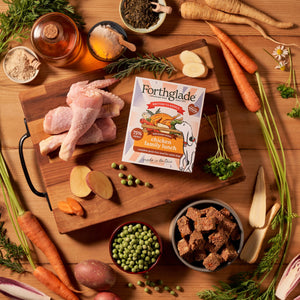
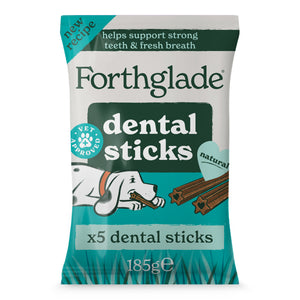
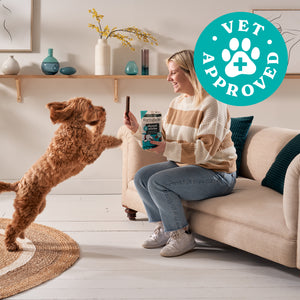
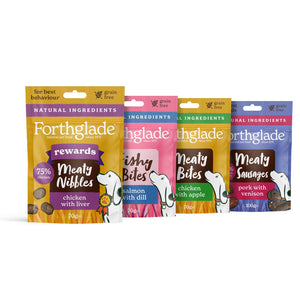
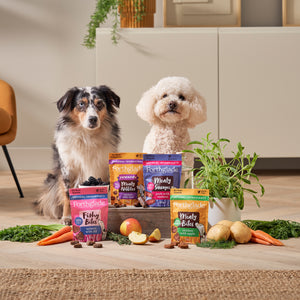


 Over 12,000 5* Reviews
Over 12,000 5* Reviews
 Subscribe & Save At Least 10% Off Every Order!
Subscribe & Save At Least 10% Off Every Order!


